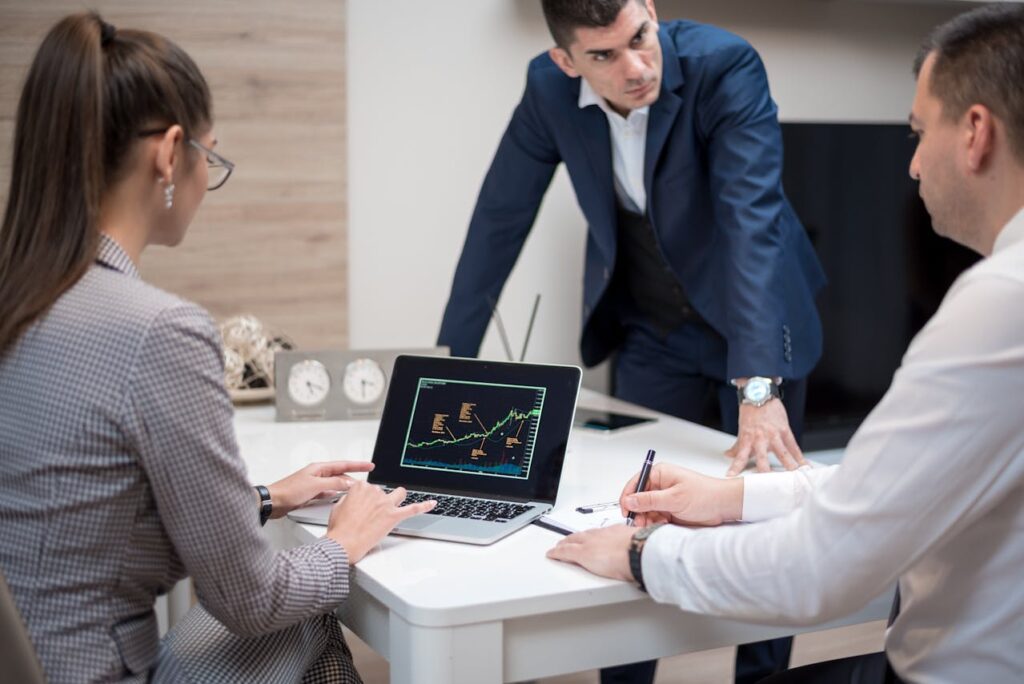Most founders think pre-seed investors are looking for something flashy. Big pitch decks. Bold ideas. A perfect product.
They’re not.
At the pre-seed stage, you don’t need everything figured out. You don’t even need a full product. But you do need the right signals. The kind that show you’re serious. That you’ve done the work. That you’re building something that’s not just another app, but a real business with staying power.
The truth is, most investors say yes or no before you even finish explaining what you do. So how do you show them what they want—before they even ask?
This article is for you if you’re early. Like, really early. If you’re still debugging your prototype. If you’re still figuring out your pricing. If you haven’t raised a dollar yet, but you know what you’re building could change things.
We’re going to walk through what pre-seed investors actually look for. Not the fluff. Not the pitch polish. But the real, honest signals that get you a second meeting—or even a check.
Let’s get into it.
1. Clear, Specific Problem — and Why It Matters Now
Show them what’s broken, not just what you’re building

Before any investor cares about your solution, they want to feel the problem.
Too many founders rush into showing off their tech. But if an investor doesn’t feel the pain point, they won’t care about the fix.
Start with clarity. What’s the core problem? Not a vague one. Not “AI is changing everything.” Investors hear that 10 times a day. Be real. Be precise.
Maybe it’s a gap in how warehouses manage robot fleets. Maybe it’s a workflow AI can speed up in medical labs. Whatever it is, make it small enough to explain fast—but painful enough to matter.
Prove it’s not just your idea—it’s a market truth
Great founders don’t just describe problems—they prove them.
Use what you know. Are you a former PhD? A robotics engineer who’s lived this pain firsthand? Good. Talk about that. Show you’ve been in the weeds.
But also bring outside proof. A quote from a customer. A stat from a niche paper. A Reddit thread full of frustrated users. Anything that shows you’re solving a real, specific problem—not a fantasy.
Investors want to back people who are obsessed with the problem, not just excited by a shiny solution.
Why now matters more than ever
Timing is everything.
Why is this the right time to fix this problem? What changed? Maybe a new regulation just passed. Maybe GPUs finally got cheap enough. Maybe there’s a new data source that didn’t exist two years ago.
Whatever the shift is—highlight it. Investors want to ride a wave. Show them the wave.
2. Early Signals of Execution
Ideas are cheap. Action speaks louder.
Every investor has seen the deck with the hockey stick graph. Everyone has a roadmap that ends in $100M ARR.
But what gets attention? Founders who do more than they talk.
At the pre-seed stage, you don’t need revenue. You don’t even need a full product. But you do need proof you’ve moved fast, learned fast, and built something—even if it’s rough.
Show progress, even if it’s messy
What counts as progress?
Maybe you’ve built a prototype. Maybe you’ve tested something on real users. Maybe you hacked a workaround using ChatGPT just to test your idea.
That all counts.
Investors don’t expect polish. They expect progress. Show you’ve shipped something. Show you’ve talked to users. Show you’ve found out what doesn’t work—and what might.
If all you have is a deck, and no proof you’ve touched the real world? That’s a red flag.
Execution shows you can learn
Early investors aren’t just betting on your tech. They’re betting on you.
They want to see that you can take an idea and turn it into action—fast. Even if the first version flops.
If you’ve run experiments, built MVPs, or even changed direction based on feedback—that’s gold. That shows you’re learning. And at this stage, learning speed is everything.
Execution isn’t just about building fast. It’s about showing you can think, try, adjust, and move again.
3. A Strong Technical Edge
Investors want more than just code

Pre-seed investors know you’re early. They don’t expect a full product or perfect tech. But they do expect depth.
They want to know what makes your approach different—and why you’re the right team to build it.
Are you doing something technically hard? Great. Make it simple to explain. Are you building with recent advances in AI, robotics, or automation? Even better. Help them understand how you’re using those advances in a way that isn’t obvious.
A good investor sees hundreds of teams using the same open models, APIs, and cloud tools. The ones who stand out are building something other teams can’t just copy.
Why technical insight is more valuable than code
At this stage, the code itself isn’t what matters most. What matters is your insight.
What do you understand about this space that most others miss?
Maybe it’s a new algorithm. Maybe it’s a tricky constraint in the hardware layer. Maybe it’s a new way of combining tools that saves time or cost.
Your technical edge is about more than engineering skill. It’s about showing you’ve done the thinking. That you’re not just building what’s possible—but what’s uniquely smart.
That’s what gets investors excited. They’re looking for signs that what you’re building won’t be easy to replicate once it works.
Defensibility starts here—not later
Most founders wait until after they raise to think about defensibility. But the best ones build it in from day one.
Maybe you’re already thinking about patents. Or maybe you’re collecting data no one else has. Or maybe your system gets smarter over time, creating a compounding advantage.
Whatever it is, make it clear.
This is where Tran.vc comes in. We invest our time and legal firepower into helping you turn technical insights into strong IP from the start. Because we know that protecting your edge early gives you the leverage you need later.
Apply anytime at https://www.tran.vc/apply-now-form
4. A Founder with Grit and Clarity
You don’t have to be polished—but you do have to be real
At the pre-seed stage, investors don’t expect a perfect pitch. They’re not looking for charisma or buzzwords. They’re looking for clarity and grit.
Can you explain what you’re doing in simple words?
Can you talk about where you’re stuck—without spinning?
Can you handle hard questions without getting defensive?
These are signs that you’re the kind of founder who can weather the early storm.
Clarity builds trust faster than confidence
You don’t need to sound like a TED speaker. But you do need to make things make sense.
Investors are busy. If they have to guess what you’re building—or what market you’re in—they’ll move on.
So practice explaining your startup like you’re talking to a friend. No jargon. No filler. Just the truth, clearly told.
A founder who speaks clearly about what they’re doing—and why—signals that they’ve done the thinking. That they’ve seen the patterns. That they’re serious.
Grit is visible in how you move
The best founders are hard to shake. They get knocked down, but keep going. They don’t wait for perfect answers. They test. They try. They figure it out.
You can’t fake grit. But you can show it.
Talk about what you’ve done with very little. Show how you’ve learned from failed experiments. Make it clear you’re here for the long game.
Investors don’t need you to be superhuman. But they do want to know you won’t quit the moment things get hard.
That’s what makes you investable.
5. Early Signs of a Moat
Investors don’t just back potential—they back protection

Most early-stage founders think investors only care about vision. Big markets. Big dreams. Big TAM slides.
But what really gets investors leaning in? Moats.
Not the kind you draw in a Series B deck with buzzwords like “network effects” and “flywheels.” The real kind. The kind you start building early, even when your product is barely holding together.
Because here’s the thing: A good idea can attract capital. But a smart, defensible approach attracts conviction.
And at the pre-seed stage, conviction is everything.
What does a moat look like when you’re just getting started?
You don’t need to have a massive barrier to entry on day one. But you do need to show that you’re thinking about it.
Maybe you’re collecting data that no one else is touching.
Maybe your system improves every time it’s used, making it harder for competitors to catch up.
Maybe you’ve filed provisional patents for your key methods.
Or maybe your insight into a messy, overlooked niche is so deep that it would take someone else a year just to catch up.
That’s the kind of early moat that gets an investor to stop and say: “There’s something real here.”
And that’s where your leverage comes from.
Moats aren’t just about technology—they’re about strategy
Your edge doesn’t have to come from a model or a tool. It can come from how you build, who you build for, and how fast you learn.
Some of the strongest moats in early companies come from founder behavior.
You’re talking to customers every day. You’re obsessed with solving problems that others don’t even see. You’re figuring out how to get to revenue with $0 in paid ads. That’s a moat.
Others won’t be able to move like you. They won’t learn as fast. They won’t be as close to the ground.
And over time, that turns into something competitors can’t just copy.
This is where patent strategy becomes a power move
If you’re building in AI, robotics, or deep tech, this is where things get serious.
Because a technical moat is only as good as your ability to protect it.
You might be solving a hard problem. But if someone can reverse engineer your method in six months, that’s not a moat—that’s a temporary advantage.
At Tran.vc, this is exactly where we help founders win.
We don’t just tell you to “think about IP.” We actually work with you—side by side—to define your moat, map out your protectable methods, and file IP the right way. The kind that builds real enterprise value.
This isn’t about paperwork. It’s about leverage.
The kind that helps you raise without giving up control. The kind that gives investors confidence. The kind that makes acquirers take notice years later.
And the best time to build that leverage? Right now—before anyone else is looking.
You can apply for that help anytime: https://www.tran.vc/apply-now-form
Moats compound. But only if you start early.
Every startup has momentum in the beginning. But only a few build something that compounds.
That’s what a moat is. Not just a shield—but a flywheel. It protects you while you build, and it makes everything you build more valuable.
The best founders start building that edge from day one.
And the best investors? They notice.
What Ties It All Together
Pre-seed isn’t about having it all. It’s about showing you know where you’re going.
When you’re this early, nobody expects you to have a polished company. You might still be prototyping. You might still be hunting for your first real customer. You might be doing this all in your spare time while working a day job.
That’s normal.
But investors still want to see something. Not everything—but the right things. And those things aren’t just about your product. They’re about you. How you think. How you move. What you’re obsessed with. What you’ve already done with very little.
You don’t have to check every box. You just have to show you’re not guessing.
You’ve thought about the problem deeply. You’ve taken action quickly. You’ve made choices on purpose. And you’re already doing the hard work that most people skip.
That’s what investors notice. That’s what they bet on.
The truth is, most pre-seed startups don’t get a second look
Not because their idea was bad. Not because the deck was ugly. But because they didn’t show enough of the right signals at the right time.
Signals that say: this founder knows what they’re doing—even if it’s early.
Signals like a clear, painful problem with good timing. Real execution, even if it’s messy. A technical approach with depth. A founder who’s honest and sharp. A plan for protecting what’s being built.
When investors see those things, it’s not about whether they want to invest. It’s about how fast they can get involved.
And that’s what gives you leverage. That’s what puts you in control.
How to Pull These Signals Together as a Founder
No signal stands alone—it’s about the story they tell together

Each of the five things we’ve talked about—the problem, execution, technical edge, founder grit, and early moat—they aren’t boxes to check off like a form.
They’re parts of a bigger story. A story about how you think, how you work, and how you’re building a company that could matter.
A clear problem with no action means you’re just talking. A clever prototype with no deeper insight means it’s a science project, not a business. A technical team with no customer obsession will miss the market. A founder who’s brilliant but defensive can’t build trust.
But when these parts work together? That’s when things click.
Investors don’t want perfection. They want to feel momentum. They want to see a spark—a few sharp moves that hint at something much bigger to come. They want to believe that you’re already building something real, and that with a little help, it could move fast.
Investors aren’t looking for big swings—they’re looking for smart signals
You don’t need to build the whole product before raising.
You don’t need a list of 20 customer logos.
You don’t need to patent everything before you launch.
What you do need is to give investors confidence. And confidence comes from clarity, effort, and choices that make sense in your stage.
You built a prototype—not to impress, but to test something real. You talked to customers—not for quotes, but to refine the idea. You filed a provisional patent—not because someone told you to, but because your method is unique and deserves protection.
Every little step sends a signal. That’s how trust builds.
Don’t fall into the pitch trap
A lot of founders spend too much time perfecting their pitch—and not enough time understanding what investors are actually looking for.
They cram slides with charts and buzzwords. They try to sound like they’ve already made it.
But good investors don’t care how slick your deck is. They care how real your company is becoming.
Instead of focusing on the story you think investors want to hear, tell them the truth: what you’ve done, what you’ve learned, what’s hard, and what’s next.
Show them you’re the kind of founder who won’t hide the hard parts. Who isn’t afraid of uncertainty. Who’s here to build, not just raise.
That’s way more powerful than any pitch deck polish.
The “scrappy” phase is where you gain real leverage
Right now—before product-market fit, before a seed round, before you go full-time—this is when you make your smartest decisions.
It’s when you decide whether to build fast or build right.
It’s when you choose between short-term traction and long-term protection.
It’s when you decide whether to chase funding or build leverage first.
And what you do in this phase matters more than most founders realize.
Because once you raise, the stakes go up. The clock starts ticking. And if you haven’t laid the groundwork—a technical moat, an IP layer, a thoughtful roadmap—it’s hard to go back and fix.
But if you’ve done the work? If you’ve built with intention from the start?
You’ll raise faster. You’ll give up less. You’ll attract better partners. And most importantly—you’ll stay in control.
Building before you’re “ready” is the best way to get ready
You don’t need a full team to talk to users. You don’t need investors to start designing your moat. You don’t need a round to file a provisional patent.
The biggest myth in startups is that you have to wait for permission—funding, attention, traction—before you start moving like a real company.
But the best founders don’t wait.
They use what they have. They start small. They move fast. They think deeply. And they build something real—even if it looks messy at first.
And those early moves are what make them stand out.
They don’t just show what the company is. They hint at what it could become.
That’s what pre-seed investors are hunting for—not polish, but potential backed by proof.
If you’re early, but serious, Tran.vc is built for you
Most pre-seed funds write checks and wait. We do the opposite. We roll up our sleeves early—before you even raise money—and help you turn raw code, research, and invention into real IP.
We invest up to $50,000 in expert patent work, filings, and strategy—so you can build a moat before product-market fit. So when it’s time to raise, you’re not chasing checks—you’re choosing them.
We’ve done this for AI teams. For robotics researchers. For founders with nothing but a repo and a hard problem. And we only partner with a few at a time, because we go deep.
If that’s you—if you’re building something hard, and you want to protect it right from the start—apply now.
We’re ready when you are: https://www.tran.vc/apply-now-form
